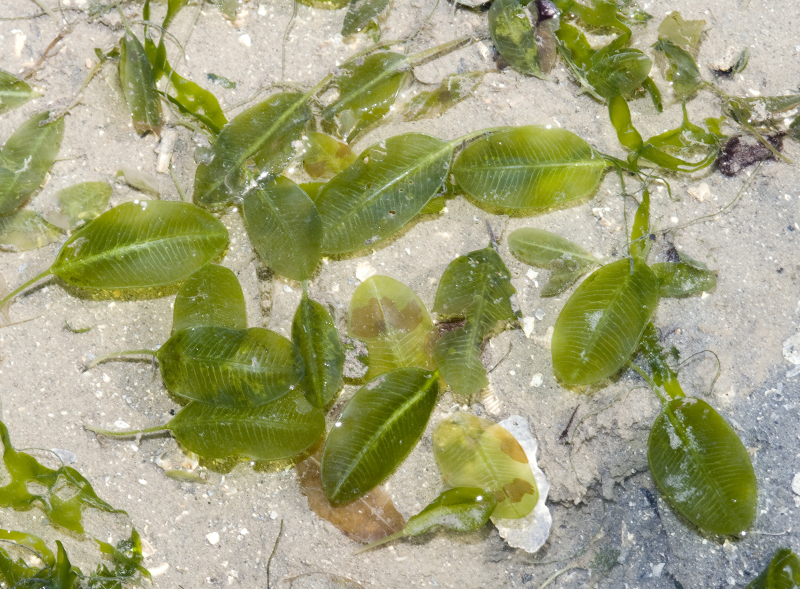�
�

©Anne: Halophila ovalis (oval leaves) and Halodule uninervis (thin strap-like leaves) exposed at low tide at Lizard Island.
�
���
Halophila ovalis
Dugong Grass

©Anne: Halophila ovalis (oval leaves) and Halodule uninervis (thin strap-like leaves) exposed at low tide at Lizard Island.
Kingdom
Plantae
Division
Tracheophyta
Class
Magnoliopsida
Order
Alismatales
Family
Hydrocharitaceae
Genus
Halophila
Species
Halophila ovalis
Colours
Distinguishing features
The leaves are ovate in outline, appearing on stems that emerge from rhizome beneath the sand. The roots get up to 800 mm long and covered in fine root hairs. (Wikipedia)
Size
- Size data has not been obtained.
Synonyms
Distribution
Distribution and habitat preferences
The plant occurs around reefs, estuaries, islands, inter-tidal areas, on soft sand or mud substrates. It is often found in meadows that dominate a sand bank or other patch of sea floor. (Wikipedia)
Web resources
Natural predators
References
- Cribb, A.B. and J.W. Cribb (1985). Plant life of the Great Barrier Reef and adjacent shores University of Queensland Press, St Lucia.
- De Sloover, J.R. and A.-L. Jacquemart (2008). Nymph Island (Great Barrier Reef, Qld., Australia): Flora and vegetation of a low wooded island, Scripta Botanica Belgica, 43: 1-88. LIRS catalog number 1210.
- Hay, M.E., J.R. Pawlik, J.E. Duffy and W. Fenical (1989). Seaweed-herbivore-predator interactions: host-plant specialization reduces predation on small herbivores, Oecologia, 81: 418-427. LIRS catalog number 276.
- View all references


